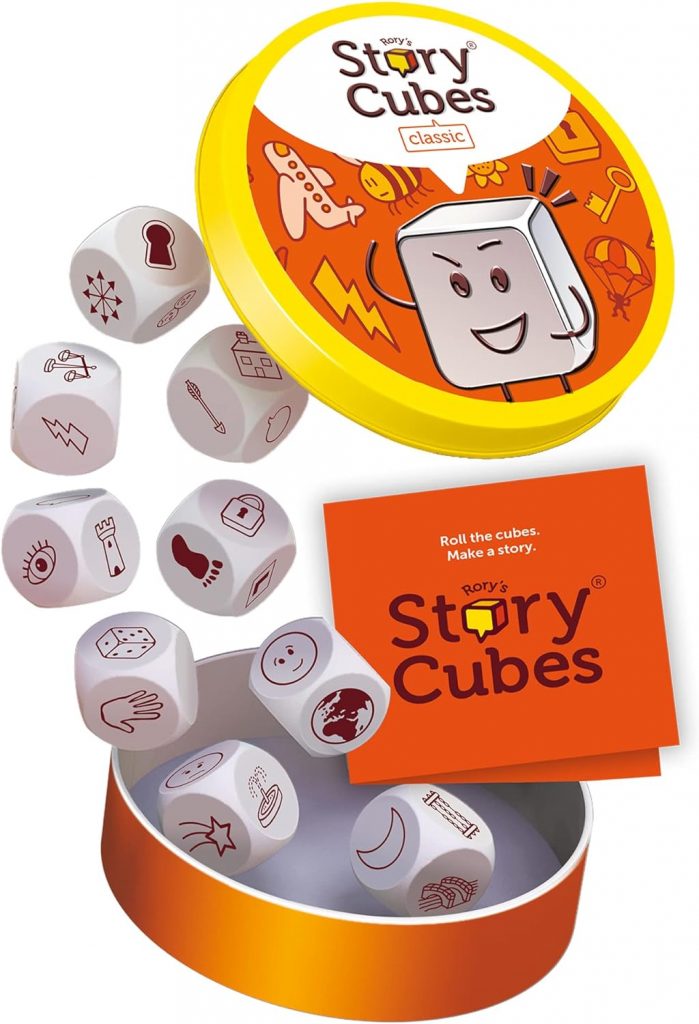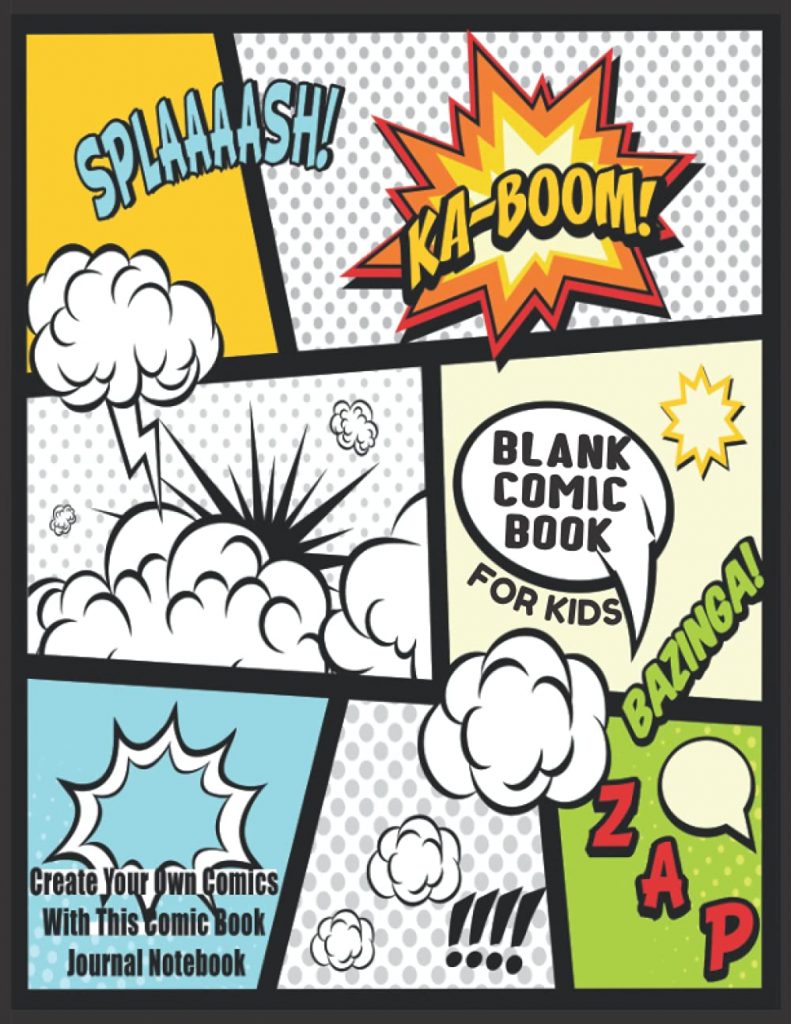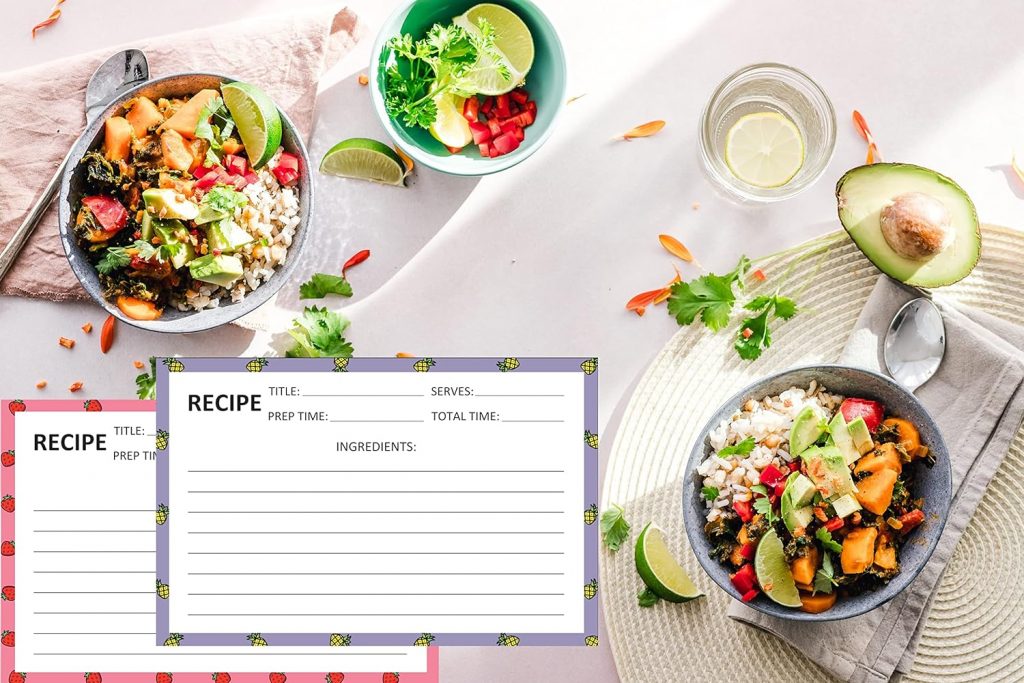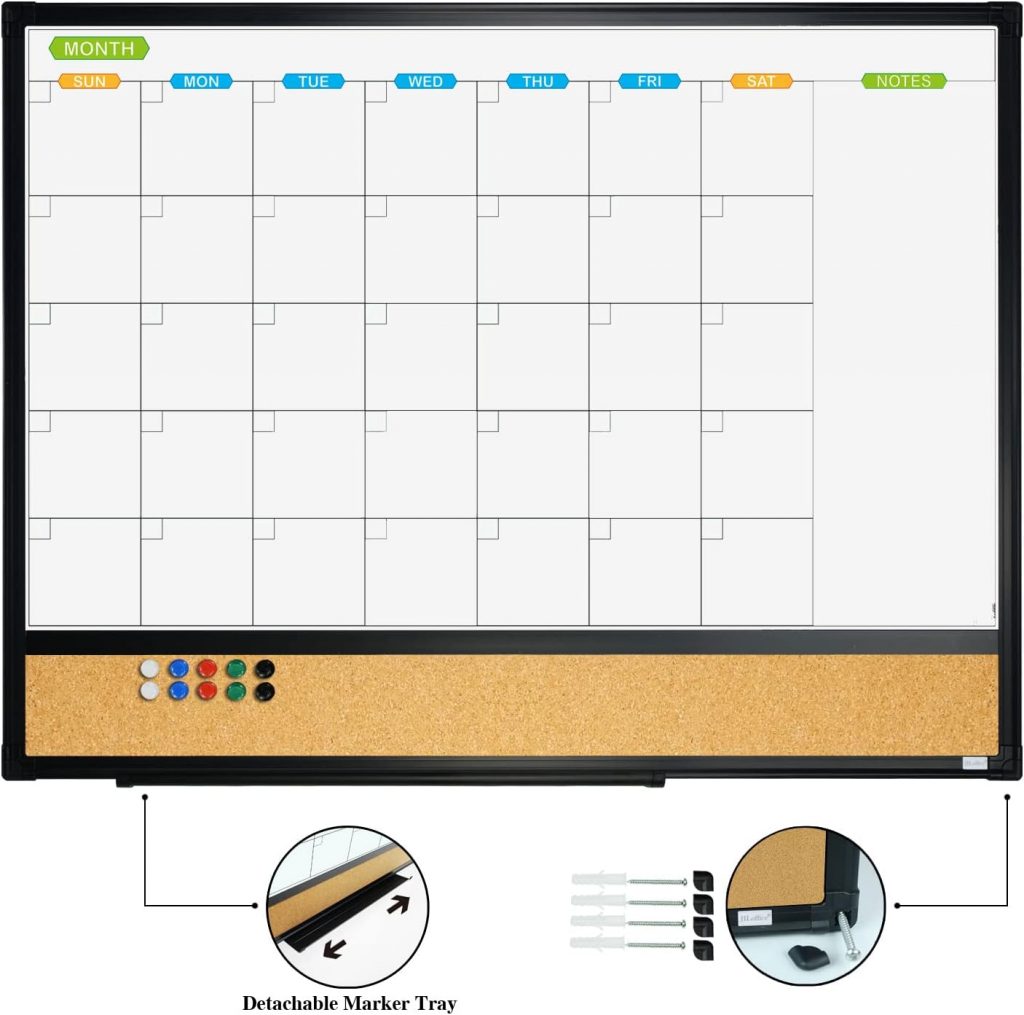20 Fun Activities to Improve Your Student’s Writing

Do your students grumble when it’s time to practice writing? Is getting them to write an essay painful for both of you? Maybe it’s time to try some fun writing activities instead!
Episode 060:
TWO WAYS TO LISTEN TO THIS EPISODE:
1. Click PLAY Button Above ^^ to listen here.
2. OR Listen on your favorite podcast platform:

Apple – Spotify – Google Play – Amazon – Others
Scroll down the FREEBIE this week:
Creative Writing Templates (pdf)
Are you just starting your homeschooling journey? We’re here to help! Begin with our Get Started in Homeschooling page and Homeschooling FAQ to make the transition smoother. If you’re guiding a young child, explore our How to Homeschool Kindergarten. to make those first steps special. For middle schoolers, don’t miss our Middle School page packed with tips and advice. And if you’re heading into the high school years, our Essential Steps to Homeschool High School will guide you every step of the way!
Show Notes
Over the years, we’ve tried countless writing programs and curricula in a constant effort to keep writing fun and interesting. While we’ve had success stories with a few programs, we found one of the best ways to keep kids engaged with writing is to integrate a fun activity alongside our regular curriculum. When they’re having fun, they want to write more, which helps them develop stronger creative writing skills and become better writers. In today’s episode, we have some great ideas and activities to make writing fun for your kids.
Writing is a skill that can be challenging for some kids. It encompasses the intricate understanding of grammar and vocabulary. As homeschooling parents guiding our children, we recognize that nurturing effective writing skills is crucial for their future endeavors in college and the workforce. While the task may seem time-consuming and taxing, you have the ability to not only teach these skills to your children but also cultivate a love for writing in a gentle manner.
We also want to add that this is different from just handwriting. We often see posts or questions from people about writing (especially when it comes to young kids) and we always like to clarify first- do you mean the physical act of bringing pencil to paper or are you talking about foundational composition, sentence structure, detailing thoughts? These are two very different age appropriate things.
It is very normal for young children (especially boys) to be resistant or struggle with the act of handwriting, and it’s also not really age appropriate to expect a lot of writing out of a 6 year old. I, personally, don’t do a ton of writing work outside of handwriting with under 10s. This can be a really frustrating subject to force when a little time and maturity will often make this a much easier endeavor.
We talked about this in Episode 28 “How to keep learning fun.” If you are struggling with the physical aspect of writing, you want to make sure to rule out an actual physical limitation to writing. Visual tracking and other learning differences can also be a factor. If you feel like there might be some underlying issues, we have an entire page and episode devoted to learning differences. 021. How Do You Homeschool a Child with a Learning Difference?
I did take my son to an occupational therapist when he was little because he complained about how much writing hurt his hands. She gave us some exercises and different kinds of pencil holders and grips.

But today we are really going to be talking about foundational writing. Writing is a complex process that requires the integration of multiple skills, many of which are executive functioning skills. Writing involves having to visualize ideas in your mind, so that you can manipulate your thoughts into structured sentences that make sense. You need to search your brain for the proper sounds that make up letters and words and ideas. And then transpose those letters on paper by hand.
Important Points to Remember When Teaching Writing:
When working to improve your child’s writing skills, there are some key things to keep in mind:
Be patient
It’s going to take time for your child to develop writing skills. Just like with anything else, the more practice they get, the better they’ll become at it. Learn your child’s limits and know when to push and when to walk away and come back to something later.
It doesn’t seem like it, but sometimes walking away and giving something tricky a rest is all it takes for a skill to finally take root. Don’t be afraid to do this!
Encourage effort
It’s important to praise your child’s efforts, even if the writing isn’t perfect. This will help to build confidence and motivation. If at first you don’t succeed, try, try again. Some of the best learning about writing comes in the corrections and while going over their work positively.
Make it fun
If your child is seeing writing as a chore, it’s going to be a lot harder to get them to stick with it. Find ways to make it fun – we have a great list of ideas we’re about to get to!
Be a role model
Show your child that writing is important to you by incorporating it into your everyday life. This will help them to see the value in practicing writing on a daily basis. We will talk more about this but journaling is something I really love to do.
Show interest
It’s important for your child to see that you are interested in what they write. Don’t just focus on how good their writing is or the mistakes they made, but instead, talk to them about the ideas they’re exploring and why you think they’re important.
I see a lot of parents really wanting to farm this aspect of writing out, and that’s fine if that’s what you want to do, but you really can and should consider doing this yourself. It really can help with your relationship when your child knows you are interested in what they have to say.
Whether you are working on penmanship or crafting stories and paragraphs, it’s important to remember that your relationship comes first. We are lucky that we are in the unique position that we are with our children daily and have the ability to influence them. The words we choose with our kids can make or break their spirits. When we encourage our kids and give them our undivided attention, their confidence is going to grow.
20 Fun Writing Activities (9:50)
Engaging our young learners in writing can be a fun and collaborative experience. Let’s explore various activities that transform writing into an exciting venture, fostering not only proficiency but also their sense of accomplishment:
1. Story Chains:
There are many ways that two or more people can work together to write a short story. Write down a prompt and have your child contribute to the story in a set time (1-2 minutes). Have them pass the paper back to you or a sibling(s) and then back to you. The objective is to create a coherent story through teamwork, making writing a shared adventure. This is a game we like to do in scouting around a campfire, too. This is a great activity to do orally.
2. Create Personal Journals:
I mentioned this earlier, that I love to journal. Provide your child with journals and colored pens, inspiring them to express themselves freely. Prompt them to write about their daily experiences, favorite movies, or hobbies. This personal reflection not only enhances writing skills but also fosters a sense of self-expression.

One Question A Day is perfect for children aged 9-12. This fun diary helps kids to get to know themselves a little better. Full of both silly and serious writing prompts in the form of questions, this journal will become a keepsake for years to come! Each day, your young writer will fill out the journal by answering a new kid-friendly question. The diary is undated, so it can be started on any day of the year! The goal of this journal is for children to become comfortable with expressing themselves creatively through writing, and to have fun along the way! Start sharing your thoughts and feelings by journaling, and get on the path to self-discovery!
3. Index Card Stories:
Utilize index cards as an alternative to traditional writing. Ask your children to share funny stories on index cards. You can even make this a regular group activity with friends or homeschool co-op. This type of interactive approach keeps the writing process dynamic and enjoyable.

4. Story Completion with Templates:

Design story templates with pictures and scattered words throughout. Challenge your children to use these elements to craft their own unique stories. This creative exercise not only stimulates imagination but can also showcase the surprising depth of your children’s storytelling abilities. Story Cubes are a fun way to get creative this way too.
5. Letters
Have your children write heartfelt letters to extended family, friends or pen pals. The act of exchanging these letters fosters camaraderie and provides a meaningful context for practicing writing skills. You can also work on formal letter writing. That’s always a good skill to have.
6. Retelling Favorite Stories
Encourage your children to write about stories that have left an impact on them, be it real-life experiences or tales from books and movies. This activity enhances descriptive writing skills and allows for the exploration of different narrative styles.
7. Word Challenge
You can also enhance their vocabulary with creative writing by presenting a recently taught word as a challenge. Ask your kids to construct sentences using the word and then exchange sentences to craft unique stories. This playful approach reinforces language skills in a fun and engaging manner. You can use vocabulary lists from your curriculum or things like word of the day calendars.
8. Birthday Wishes and thank you notes
Have your child create and write a birthday card for a special friend. This quick and heartwarming exercise seamlessly integrates into your lessons while promoting a positive writing culture. Did they recently have a birthday or receive a holiday gift? Have them write a letter of gratitude thanking them for the gift. These Card Making Kits are fantastic!

9. Reviews
Have your child go on Yelp and write a review for their favorite (or least favorite) restaurant. Do they love a new purchase they recently got from Amazon? Have them write their own personal review. Funny Review of the Bic Pen for Her.
10. Blog
Use technology to your advantage. What does your child love? Do they have a hobby or love legos? Help them create a Free blog to write about their passion.
11. Image Prompt
A picture is worth a thousand words, right? Why not try photo writing prompts? This is a fun story writing activity. It’s simple and can be pulled off with almost no prep time. You’ll want to choose an image you want to display then set a timer. Have everyone (even you) write a story inspired by the picture for fifteen minutes. No planning for this one; this time everyone is writing by the seat of their pants. When the timer ends, stop writing and read each other’s story.
We’ve talked about programs like StoryStarters before. This is a book with a series of story beginnings with illustrations and the student then finishes the story.
12. Writing Club
Join a creative writing club. If you can’t find one, create your own homeschool writing club. Your child can interact with other young writers, share their work, and receive constructive feedback. This fosters a sense of community and motivation.
13. Comic Creation
Encourage your child to create their own comics. This involves both writing dialogue and using visual storytelling. It’s a great way to combine writing and art while fostering creativity. There are even these really cool blank comic books that you can use.

14. Outdoor Writing Adventures
Take writing outdoors. Whether it’s at the park, in the backyard, or during a nature walk, being in a different environment can inspire new ideas and perspectives for writing. This Hiking Journal is sure to inspire your kiddo!
15. Interviewing
Have your child interview family members or friends. Have them write out their own questions, conduct interviews, and then turn the responses into a written piece. This can really improve communication and writing skills.
16. Newsletter
Have your child create a monthly newsletter for family and friends. They can share updates, stories, or even jokes. This not only improves writing skills but also encourages regular writing practice. One of our homeschool groups does this as a group and it’s all child led.
17. Create Mad Libs
If your child has never played Mad Libs, you will first need to explain this writing game to them and maybe have them do a practice round to get used to the concept. Then have them prepare the story. They can either create it from scratch or use an existing text. For example, they might copy out the first paragraph or two of a book. Have them write it on lined paper, double spaced. Next, they can choose some words to remove from the story. Once they’ve erased the words they want to remove, they should draw a line for the blank word and write a hint under the line to indicate what kind of word is needed.
It’s helpful if they have an understanding of nouns, verbs, adjectives, and adverbs. If they don’t, this is a great time to introduce these concepts. I’ve yet to meet a kid who doesn’t love Mad Libs. They’re such a fun way to approach word choice and sentence structure. Kids get a kick out of making up a really silly story while subtly learning the differences between the various types of words.

18. Create a Menu or Recipe
Menu and Recipe writing is a completely different type of writing, which is a bit more straightforward which some students struggling to get creative might enjoy. Students can come up with either genuine menus or recipes that they would love to eat or silly ones!

19. Whiteboard or Chalkboard
It’s important for kids to understand that writing is an integral part of our everyday lives.They need to experience that writing is a great way to communicate with others. One way to help kids see the value of writing is to use a whiteboard or chalkboard in your home for family communications.
We do this with Wet Erase Markers on windows (so much better than dry erase markers!). I have huge windows next to our front door which is also our homeschool room. And I’ve often used them as boards. I remember I came up with this idea to use these windows when we were doing biology and learning classification and I charted all the kingdoms and the kids would love to come in with markers and write examples of species in their own handwriting. The windows were covered!
You also can write notes to each other, make grocery lists, write your day’s agenda, or tell a joke. This is also a great way to get kids involved in the family’s daily life and routines. And you don’t have to use a window, you can just use a dry erase board. Be prepared for your young comedians to write “poop” or “fart” a lot.

20. Reading
Read together every day. One of the best ways to improve writing skills doesn’t involve writing at all! Reading is a critical part of writing development, as it helps to expand vocabulary, improve grammar, and increase overall language skills. Make reading a daily routine that you do no matter what. You can take turns reading aloud, or let your child read to you. Either way, make sure to discuss what you’re reading as you go along. Ask questions, point out new words, and make connections to other things you’ve read or experienced.
Reading should be enjoyable, so try to find books that your child will be interested in. If necessary, start with simpler books and work your way up to more challenging ones. The more your child reads, the better he or she will become at understanding how language works, and the more he or she will be inspired to write.
We have a couple different episodes where we have our favorite books for various ages – Books for New Readers, favorite Middle School Books, and we even have Favorite Books Every Homeschooler Should Read!
All of these writing activities we listed are designed to make the learning process enjoyable, easy, and captivating for your children. Hopefully you find something helpful here today. Embrace the opportunity you have to guide your kids towards becoming not only proficient writers but also finding joy in expressing themselves through words!
This Week’s Freebie:

Download your Free Creative Writing Image Prompts and Templates





